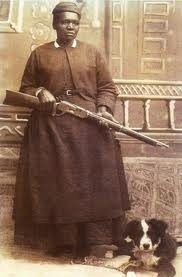I used this song about this time last year. “P.S. I Love You” was published in 1934. The music was written by Gordon Jenkins, the lyrics by Johnny Mercer. It's been recorded by artists such as Billie Holiday, Rudy Vallee, Bette Midler, Frank Sinatra and many others.
Last year, I asked if anyone knew how this song could be connected to Pi but got no replies, so I thought I'd try again. I'll admit it's a bit of a stretch but it's there. Besides, have you ever tried to find a snail mail song that could in some way be related to Pi? So, as irrational (heh-heh, math humor) as it may seem, I ask again, what could this song have to do with the number Pi? Oh, and here's a clue this time: It has something to do with the lyrics. Let me know what you come up with and Happy Pi Day!
Related Posts:
The Harlem Shake has jumped the shark. At least that's what I keep reading but what I keep seeing is video after video after video. So was its demise exaggerated?
By now you have, no doubt, seen many versions and perhaps your company produced it's own version. There is even a reverse version. And this version does not quite follow the main version format exactly. At the beginning, the other employees should be ignoring that guy in the black leather but they just can't help snickering at their coworker in that get up.
When I first set out to write this piece I had no idea if I would find a video that featured postal employees. I hoped that I would find U.S.P.S. postal workers giving it a go but no luck. Then I hit the jackpot! I never dreamed I would see the likes of this from employees of an organization that's name sounds as stodgy as ‘the Royal Mail.'
Love it or hate it, tell me how you feel about the Harlem Shake? Seen enough? Can't get enough? Done your own version?
Related Posts:
Can't think of any postal characters more interesting or better suited for a post during Black History Month than Mary Fields.
Born a slave in Tennessee, she had an independent streak as wide as Montana, which is where she went when she was freed. In spite of her affinity for whiskey, cheap cigars, and fist fights, she got a job working for the Ursuline Sisters. Maybe it was her size and strength that got her hired because she did pretty much everything a ranch foreman would do including making supply runs through very rough territory.
Then one day there was a bit of dust up when one of her coworkers found out she was getting paid more than he. He called Mary some awful names and Mary decided to shoot him. Her coworker ended up wounded when a bullet ricocheted and struck him in the buttocks but the real victim of the shoot-out was the bishop’s laundry, which was hanging on a nearby line. The bishop fired Mary and gave her ex-coworker a raise.
Mary found out about her lack of culinary skills the hard way when she tried to open a couple of restaurants. After giving away more meals than she sold, she was once again looking for work. Wells Fargo had the mail contract and was looking for someone to take on the Great Falls to Fort Benton route. Mind you, this was in 1895 and Mary was at least 60 years old. But based on her tough, independent nature, she got the job becoming the second woman – and the first black person of any gender – to work for the U.S. Post Office.
She worked that route for several years delivering mail in blizzards through dangerous, undeveloped territory. Much of the development of central Montana wouldn’t have been possible without her reliable delivery of the U. S. Mail.
Nearing 70, Mary retired from the United States Postal Service and started a laundry business. At age 72 she was still drinking and busting noses. There is at least one story about a man who didn’t pay his bill getting fed a knuckle sandwich, which, as she learned earlier, was the type of sandwich Mary made best.
Even though people saw her hard living ways, they also saw that she was mostly kind hearted. As a child, the famous actor, Gary Cooper was on her mail route and he remembered her with adoration in an article he wrote about her for Ebony magazine. When her house burned down in 1912 the whole town of Cascade helped build her a new one.
In 1914 Mary died of liver disease. She was a true Pioneer Woman who, after years of “heavy work”, hard drinking, brawling, and trailblazing, lived to be 82 years old.
